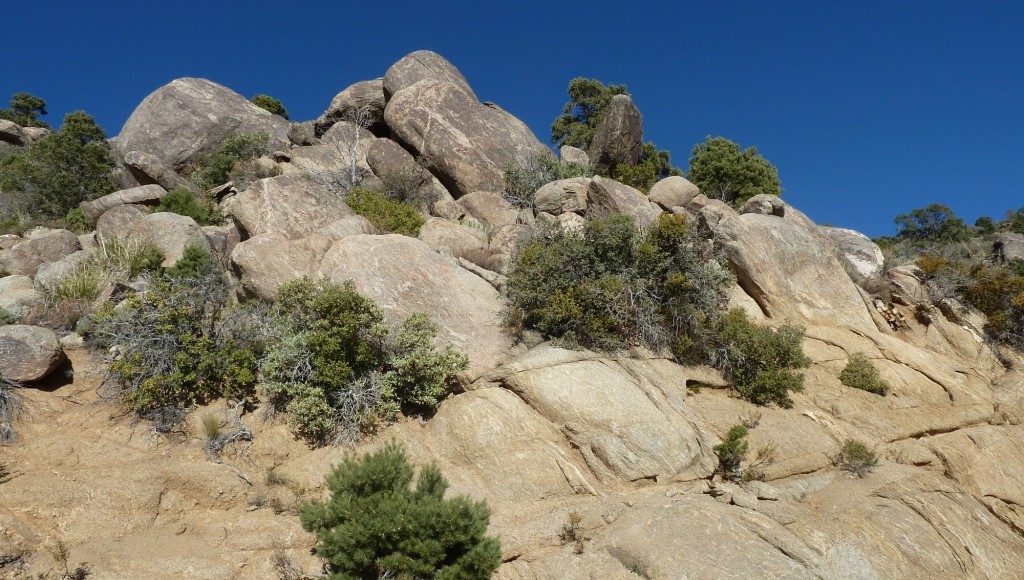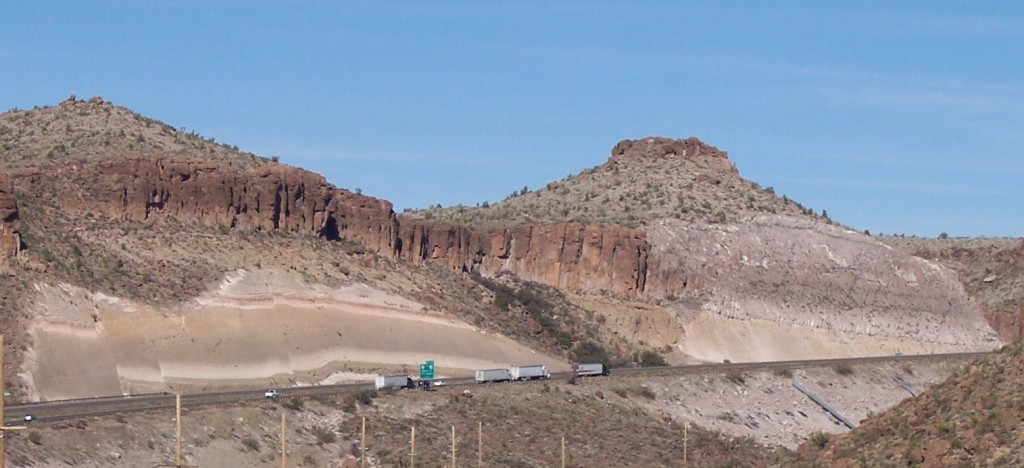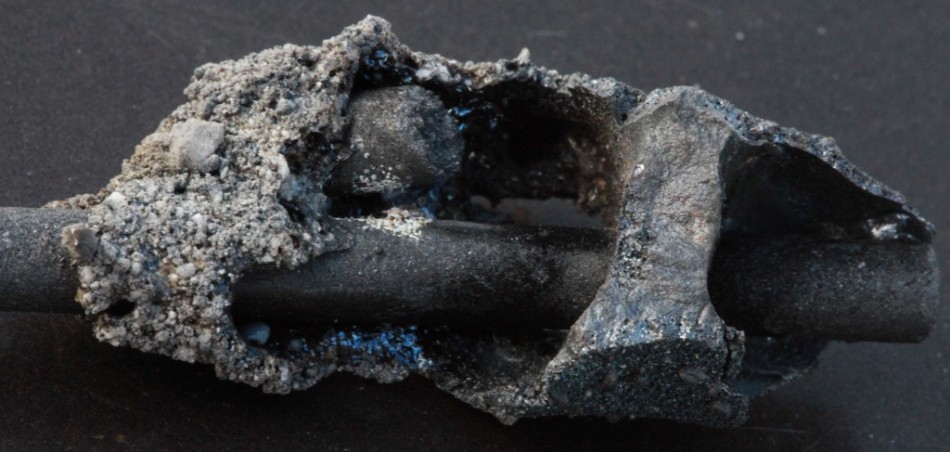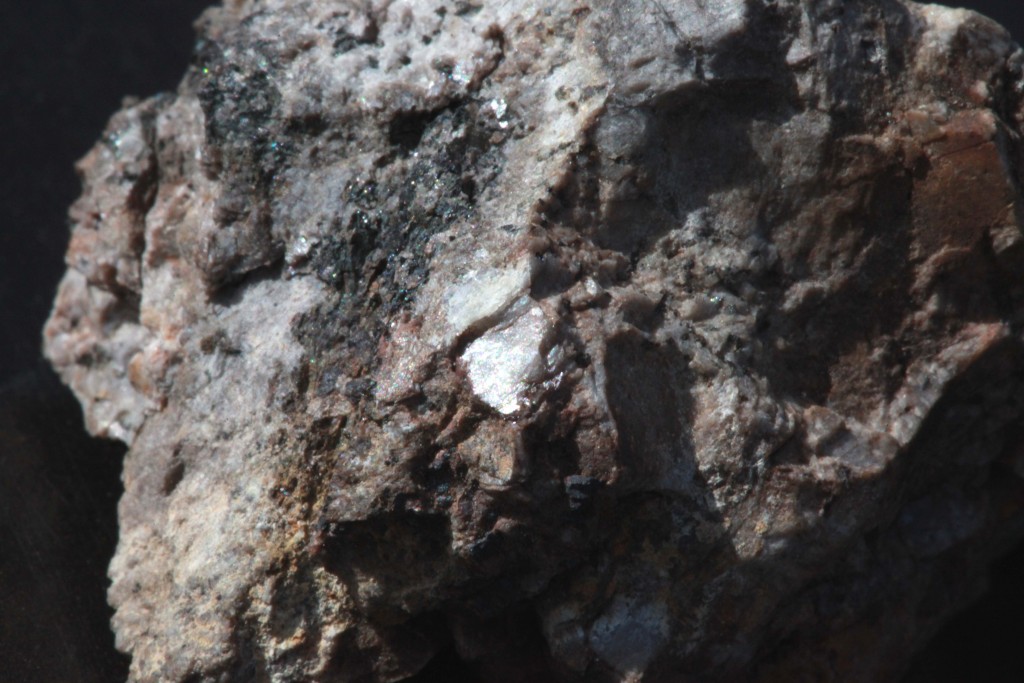Electrically created “Basalt” (Steinbacher 2011, 586)
Can igneous rocks be created without the need of magma flowing from below earth’s crust? If so, problems such as the ascent and emplacement of granite could be solved in some cases. Like this one:

Weathered granite under normal granite. Situation above the Big Wash road cut (Photo Scott Wall) via EU Geology. Here is a situation where weathered granite can be found under normal granite. The weathered granite may have not or only very rarely been exposed to the weather than the surface granite situated above it. Here, too, we find a situation in which the geological standard model is very unlikely, because you would have to assume that somehow fresh granite smuggled itself through the weathered granite to the surface in a way that can not be detected as a later intrusion. From an electrical point of view, the ridge of the mountain range and the surface got more power and consequently turned into “better” granite than the underlying layers that were “only” transformed into proto-granite.
Michael Steinbacher in his EU Geology website covers these topics and more, and apparently, it seems both granite and basalt can be synthetically created by applying electrical current to dust and soil.
Is it therefore conceivable that at least some of the mountains of the west coast of the United States are gigantic dunes that were petrified? The process of fossilization is associated with a reduction in volume. It generates sharper and narrower contours, a kind of shrinkage.
How could the process of fossilization be imagined? A dune of loose conglomerate can not simply sink into the earth, be transformed by penetrating liquid magma, and come back to the surface as rock, while the typical dune structure and shape is maintained. The process of fossilization must therefore take place at the surface and it must happen quickly. This is where electricity comes into play. On one hand there is the possibility of melting and solidification, when electricity is introduced through the top of the mountain. On the other hand, it may be a direct electrical conversion. Experiments [Steinbacher 2011, 586] have shown that it is entirely possible to transform dust and soil electrically into different types of rocks. The process first melts the material mixture. Then crystals of different size and composition form. Upon further exposure to electricity, they begin to melt itself. Essential parameters are the composition of the material, current and voltage, and the exposure time.
Also, if a powerful electric arc was able to melt surface rocks and thus create basalt it could explain the origin of some basalt formations that appear somehow “orphan”, that is, while they are supposed to come from a volcano, no one knows where it is, or where it was. Like this one, apparently:

Basalt without volcano, Kingman, Arizona. Via EU geology. Kingman is not the only point located in the southwestern United States where this strange situation with basalt persists. On the contrary, it seems more the norm rather than being the exception. Of course, there are also classic lava flows in the region associated to so-called “cinder cones”, for example within the Mojave reserve, but otherwise basalt is usually found on peaks which are not volcanoes and cannot provide a volcanic lava flow in the vicinity.








